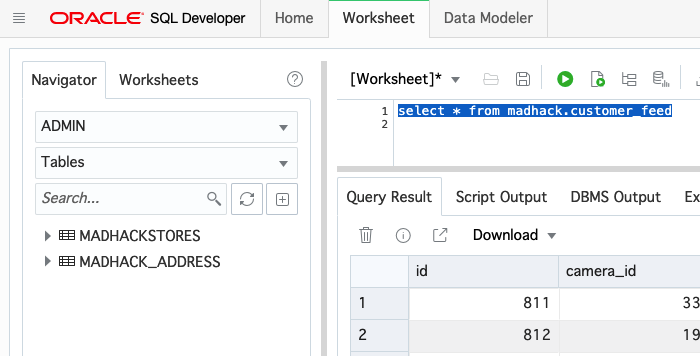Oracle’s two major ground breaking innovation last year were Autonomous Data warehouse (ADW) and Autonomous Database Transaction processing (ATP) both are database offering suitable for different workload and are self-driving, self-securing, and self-repairing in nature. If you want to read more about these services then please go through above links.
ADW/ATP both can be quickly provisioned on Oracle Cloud Infrastructure, it’s take less than 5 minute to spin ADW/ATP instance and database is ready to connect.
User can use Oracle SQL Developer to connect to ADW/ATP database as long as they are supported version. These DBaaS services also offers out-of-box browser based SQL Developer tool which can be used to run any kind of SQL statements.
Here is sample snap of browser based SQL Developer capabilities –

Once user has Database ready, obviously there could be requirement to access data residing inside ADW/ATP instances.
Fortunately, Oracle Integration Cloud provide Adapter for connecting ADW/ATP instance, click here to know more about ATP Adapter capabilities –
In this blog I will be covering simple steps how you can connect to ADW/ATP instances using OIC Autonomous Transaction Processing Adapter (ATP) Adapter.
I made assumption that ADW/ATP instance already exists. if you not sure how to create ADW/ATP instance then refer this blog which was written by my colleague who already explained how to create ADW/ATP database instance and connect from SQL developer.
So, let move forward. Login to your Oracle Integration Cloud (OIC) home page >> Integration >> Connection >> Create >> search for “Oracle ATP” >> select the same


